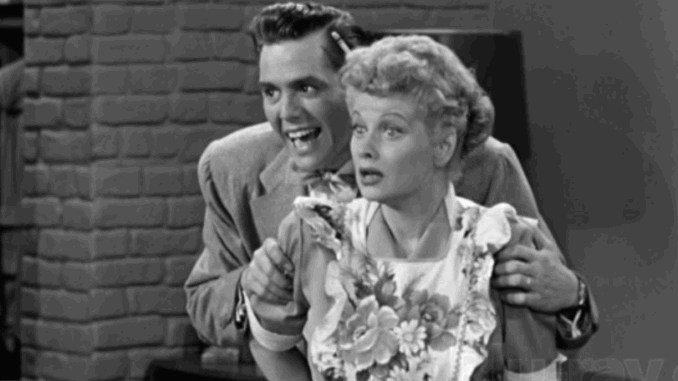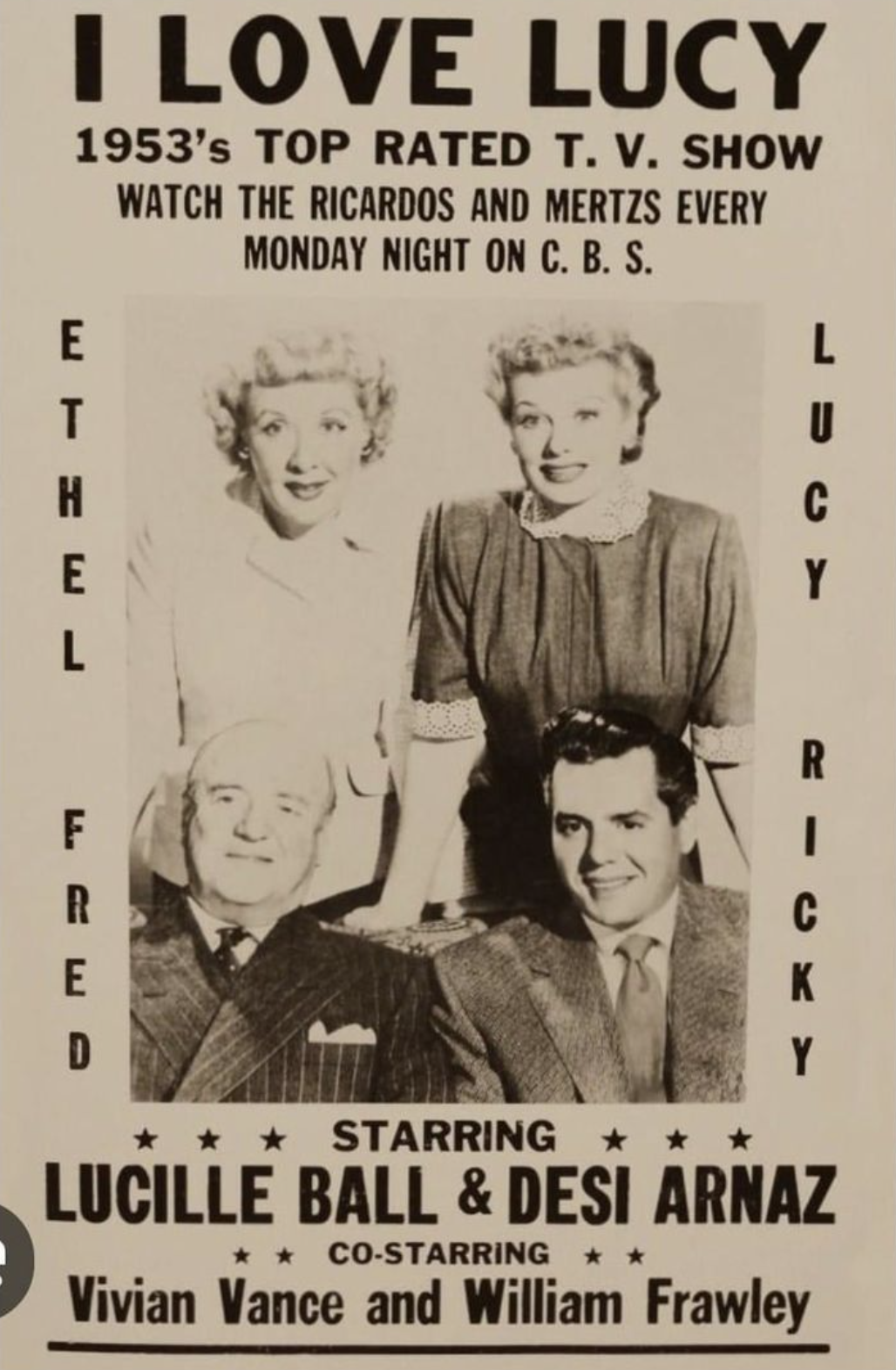
I Love Lucy is often remembered for its groundbreaking comedic genius, pioneering multi-camera filming, and the undeniable chemistry of Lucille Ball and Desi Arnaz. Yet, beneath the layers of physical comedy and zany schemes, the iconic 1950s sitcom was, perhaps unknowingly to many viewers at the time, a surprisingly bold and progressive force. It subtly challenged societal norms, gender roles, and even racial barriers in ways that were revolutionary for its era. The question is: did audiences in the 1950s even realize how subversive their favorite show truly was?
1. Televising Pregnancy: A First in TV History
In an era where the very word “pregnant” was considered too risque for television, I Love Lucy famously did the unthinkable: it incorporated Lucille Ball’s real-life pregnancy into the storyline.
- The Breakthrough: When Lucille Ball became pregnant with Desi Arnaz Jr., the network (CBS) and sponsors were initially hesitant. However, Desi Arnaz insisted on integrating it into the show. They meticulously avoided using the word “pregnant,” opting for euphemisms like “expecting,” but the visual reality was undeniable. This was the first time a major television character was visibly pregnant on screen, acknowledging a fundamental human experience previously deemed inappropriate.
- Subtle Subversion: By showing Lucy’s growing belly and the preparations for a baby, the show normalized pregnancy in a public forum, subtly pushing back against a prudish cultural landscape that preferred to keep such matters private.
2. Spousal Bedroom Habits: Challenging the “Separate Beds” Rule
For decades, the unspoken rule of Hollywood and early television was that married couples on screen slept in separate beds, symbolizing marital purity and avoiding any suggestion of intimacy.
- The Breakthrough: While Lucy and Ricky Ricardo did start out with twin beds, I Love Lucy occasionally depicted them sharing a bed or, more importantly, would show scenes set in their bedroom where the intimacy of a married couple was implied through conversation and closeness, even if they weren’t in the same bed in every shot. There were also instances where they would get into or out of the same bed, or a scene would begin with them both in one bed.
- Subtle Subversion: While not fully breaking the separate beds rule every time, the show’s willingness to place the married couple together in the intimate setting of a single bed, even fleetingly, pushed the boundaries of visual decorum and acknowledged the reality of married life far more than its contemporaries.
3. Ricky Ricardo: The First Latinx Leading Man on U.S. Television
Desi Arnaz’s casting as the male lead, Ricky Ricardo, was a monumental step forward for diversity on American television.
- The Breakthrough: Desi Arnaz was Cuban-American, and his accent and cultural background were openly acknowledged and often central to the show’s humor. This made him the first Latinx leading man in a major American television series.
- Subtle Subversion: In a post-World War II America that was predominantly white on screen, having a Latinx man not just as a sidekick but as the head of a household, a club owner, and the beloved husband of the iconic Lucy, was a quiet but profound act of representation. It challenged prevailing stereotypes by presenting him as intelligent, talented, and respected, though often exasperated by Lucy’s antics.
4. The Independent Woman (Within Limits): Lucy’s Unstoppable Ambition
Lucy Ricardo, despite her domestic role, was consistently driven by a fierce ambition to break into show business, often against Ricky’s wishes.
- The Breakthrough: While her schemes usually failed comically, and she often ended up back in the domestic sphere, Lucy’s unwavering determination to pursue a career outside the home, to perform, and to prove her capabilities was radical. She wasn’t content to be “just” a housewife.
- Subtle Subversion: In an era that heavily promoted the ideal of the contented 1950s homemaker, Lucy’s constant desire for more, even if misguided or clumsy, subtly critiqued the limitations placed on women. She pushed against societal expectations for female fulfillment.
5. Interracial Marriage (A Subtle Display for the Times)
While Lucy and Ricky were played by a real-life interracial couple (Lucille Ball was white, Desi Arnaz was Cuban), the show handled their marriage with an almost revolutionary normalcy for the era.
- The Breakthrough: The show never explicitly highlighted their racial differences as an issue or a point of contention within their marriage. Their relationship was depicted as a normal, loving, albeit comically chaotic, partnership.
- Subtle Subversion: At a time when interracial marriages were still legally prohibited in many U.S. states (until 1967), presenting a white woman and a Cuban man as a happily married, highly popular couple on national television was an immense, though understated, act of social progress. It normalized and celebrated a relationship that many parts of society still condemned.
6. Challenging Class Hierarchies: The Mertz-Ricardos Dynamic
The friendship between the middle-class Ricardos and their working-class landlords, Fred and Ethel Mertz, often transcended simple landlord-tenant dynamics.
- The Breakthrough: Despite their differing financial situations and frequent arguments, the Ricardos and Mertzes were genuine friends and partners in many of Lucy’s schemes. The show often poked fun at their quirks but always upheld their fundamental bond.
- Subtle Subversion: In a society with rigid class distinctions, depicting such a close and interdependent relationship between different socio-economic strata, where both parties contributed to the group dynamic, was a quiet challenge to the prevailing social order.
7. Portraying a Working Mother (Subtly, Over Time)
While Lucy’s attempts at a career were often comedic failures, the show eventually showed her, to some extent, balancing her domestic life with other ventures.
- The Breakthrough: After Little Ricky was born, the show continued to explore Lucy’s ambitions, even in small ways. Later, in The Lucy-Desi Comedy Hour, which continued the Ricardos’ story, Lucy did manage to have more sustained professional engagements, often traveling with Ricky.
- Subtle Subversion: While not a full-fledged working mom in the modern sense, the show’s continued acknowledgment of Lucy’s yearning for purpose beyond the home, even after becoming a mother, was a gradual step towards a more complex portrayal of women on television, hinting at the future multi-faceted roles women would assume.
I Love Lucy was more than just a funny show; it was a quiet pioneer that nudged American society forward, one laugh at a time. Its enduring popularity wasn’t just built on humor, but on a surprising boldness that subtly chipped away at the restrictive norms of its era.

